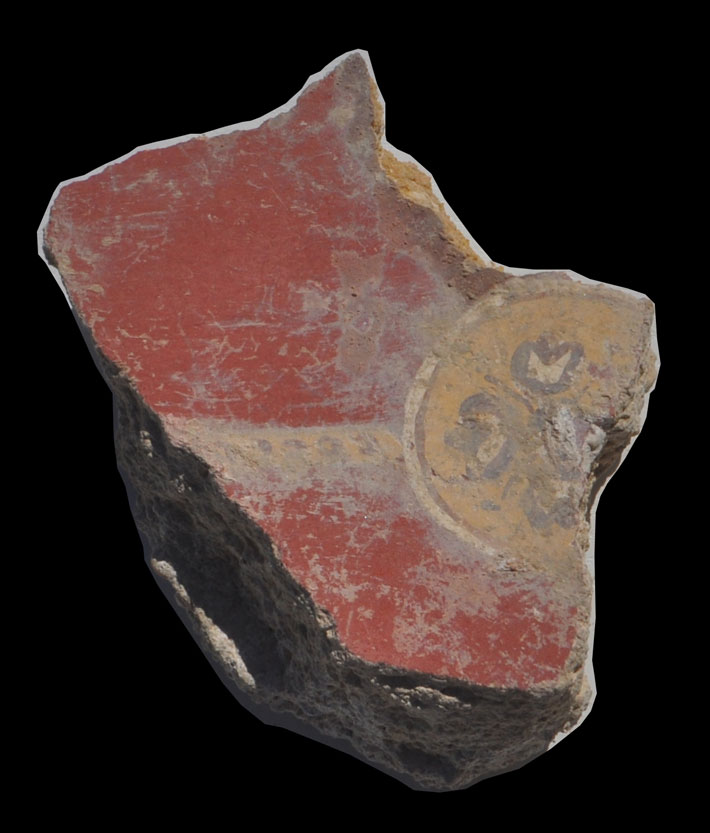 CUPRA MARITTIMA, ITALY—CNN reports that excavators working at the site of a Roman temple located near eastern Italy’s Adriatic coastline have recovered about 100 rare fragments of 2,000-year-old frescoes. Pieces of sky-blue plaster are thought to have covered the temple’s ceiling, while the walls are thought to have been decorated with red, black, and yellow squares separated by images of garlands and candelabra separated by horizontal bands of green. The rare pieces are thought to have survived because the Roman emperor Hadrian (r. A.D. 117–138) overhauled the structure in A.D. 127, including having the painted surfaces chiseled off the walls and then covered in marble to strengthen them. The plaster was then used as a base for new floors, explained Marco Giglio of the University of Naples L’Orientale. Hadrian also added columns with capitals, lion-headed roof dripstones, and two brick arches to the temple. But the marble was reused in other buildings in the seventh century, and in the nineteenth century, the surviving structure was incorporated into a house that still stands at the site. “We’re still trying to figure out whether it is best to restore it or take it down to recover the shrine in its entirety,” Giglio said. To read about a luxurious dining room unearthed at Hadrian's villa outside Rome, go to "Around the World: Italy."
CUPRA MARITTIMA, ITALY—CNN reports that excavators working at the site of a Roman temple located near eastern Italy’s Adriatic coastline have recovered about 100 rare fragments of 2,000-year-old frescoes. Pieces of sky-blue plaster are thought to have covered the temple’s ceiling, while the walls are thought to have been decorated with red, black, and yellow squares separated by images of garlands and candelabra separated by horizontal bands of green. The rare pieces are thought to have survived because the Roman emperor Hadrian (r. A.D. 117–138) overhauled the structure in A.D. 127, including having the painted surfaces chiseled off the walls and then covered in marble to strengthen them. The plaster was then used as a base for new floors, explained Marco Giglio of the University of Naples L’Orientale. Hadrian also added columns with capitals, lion-headed roof dripstones, and two brick arches to the temple. But the marble was reused in other buildings in the seventh century, and in the nineteenth century, the surviving structure was incorporated into a house that still stands at the site. “We’re still trying to figure out whether it is best to restore it or take it down to recover the shrine in its entirety,” Giglio said. To read about a luxurious dining room unearthed at Hadrian's villa outside Rome, go to "Around the World: Italy."
Fresco Fragments Discovered at Roman Temple Site
